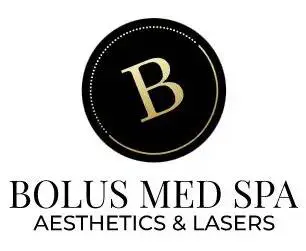Chemical Peels 101 and Everything You Need to Know!
Chemical peels are a popular cosmetic procedure and can be used to improve the appearance of the skin. You’ve heard of the VI Peel, Perfect Derma Peel, ZO 3 Step Peel, Blue Peel, but whats the difference? Lets get to the deeper layers of chemical peels and combination treatments. Chemical Peels work by removing the outer layers of dead skin cells, revealing the fresher, younger skin underneath. Think of the skin layers as sheets of paper. The deeper you go with a chemical peel the more sheets or paper or layers of skin you can remove. While very safe for almost all skin types and colors, choose your provider carefully. Othewise, you could be permanently injured or scarred. Chemical peels can be used to treat a variety of skin concerns, including:
- Wrinkles
- Acne
- Age spots
- Sun damage
- Mild Acne scars
- Hyperpigmentation
- Melasma
Chemical peels are generally safe and effective, but are chemical peels safe for your skin? They certainly are, but. youmust work with an expert who routinely does this.
What is the Best Chemical Peel For My Skin?
There are many different types of chemical peels, each with its own level of strength. The strength of the peel will determine how much of the outer layer of skin is removed. This will also give you an idea as to how much downtime you will experience. Generally you will have peeling on days 3-5.
- Superficial peels: Superficial peels are the mildest type of chemical peel. They remove the outermost layer of skin and can be used to treat superficial skin concerns. This might include sun damage and hyperpigmentation. Superficial peels can be performed in a doctor’s office or a spa and typically require no downtime.
- Medium peels: Medium peels like VI Peel, Perfect Derma Peel, and ZO 3 Step are more potent than superficial peels. They typically remove the outer two layers of skin. They can be used to treat deeper skin concerns, such as wrinkles and acne scars, but also lighten and brighten skin very nicely. Medium peels typically require some downtime with a few days of flaking, but usually less than a week. The perfect derma peel is known to have glutathione in it which brightens the skin very nicely and its one of our best chemical peels at Bolus Med Spa.
- Deep peels: Deep peels are the strongest type of chemical peel. A good example would be a phenol peel or blue peel. They remove the outer three layers of skin and can be used to treat severe skin concerns, such as deep wrinkles and scarring. Deep peels require a significant amount of downtime and should only be performed by a qualified medical professional. You will generally be sedated for this type of procedure.
Benefits of Chemical Peels
Generally, I find the best results with a series of 3 or more chemical peel done every 4-6 weeks a part, then maintenance 1-2 times per year such as spring and fall. Chemical peels offer a number of benefits, including:
- Improved skin texture
- Reduced wrinkles and fine lines
- Faded age spots and sun damage
- lightened hyperpigmentation
- Reduced acne scars
- A more youthful and radiant appearance
- If you have deep scars, lines, or textural concerns, a laser treatmwnt like Halo may be better. Book a Free Consult to learn more right here.
Alternative Treatment Options
In addition to chemical peels, there are a number of other treatment options available for improving the appearance of the skin. Some of these alternative options include:
- Microneedling: Microneedling is a minimally invasive procedure that uses tiny needles to create micro-channels in the skin. This can stimulate collagen production and improve the appearance of wrinkles, scars, and stretch marks. It focuses more on improving the texture. Our signature microneedling treatment is microneedling and unique chemical peel done at the same time and it is absolutely amazing! This is the best keep secret in Maryland!
- Laser treatments: Laser treatments like Moxi, Halo, Tetra Cool Peel Laser, or Aerolase Neo can be used to remove sun damage, age spots, and acne scars. They can also be used to tighten the skin and reduce wrinkles.
- Radiofrequency treatments: RadioFrequency Microneedling treatments use heat to stimulate collagen production and improve the appearance of the skin. Radiofrequency treatment for skin
- Chemical treatments: Chemical treatments, such as TCA cross, can be used to improve the appearance of wrinkles and mild scars like ice pick scars.
Combination Treatments
Here at Bolus Med Spa we like to get the best results whenever possible! Combination treatments are when two or more different treatments are used together to achieve better results than either treatment could achieve on its own. For example, a chemical peel can be combined with BBL or Aerolase Neo treatment to improve the appearance of acne scars.
BBL Hero(broadband light) is a type of light therapy that can be used to treat a variety of skin concerns, including acne, rosacea, and sun damage. BBL works by emitting light at a variety of wavelengths, which can target different skin problems.
Aerolase Neo is a type of laser that can be used to treat a variety of skin concerns, including acne, hair removal, and skin tightening. Aerolase Neo works by emitting laser light that is absorbed by the target tissue, causing it to heat up and break down.
The combination of chemical peels and BBL or Aerolase Neo treatment can be an effective way to improve the appearance of acne scars on all skin colors and ethnicities. The chemical peel will remove the outer layers of dead skin cells, revealing the fresher, younger skin underneath. The BBL or Aerolase Neo treatment will then target the deeper layers of skin, stimulating collagen production and improving the appearance of the scars.
The specific combination of treatments that is right for you will depend on your individual skin concerns and goals. It is important to consult with a qualified medical professional to discuss your options and choose the treatment that is right for you.
Here are some of the benefits of combination treatments:
- They can be more effective than either treatment on its own.
- They can target different skin problems.
- They can be more convenient, as they can be done in a single treatment session.
Here are some of the risks of combination treatments:
- They can be more expensive than either treatment on its own.
- They can cause more side effects or longer healing than either treatment on its own.
- They may not be suitable for everyone.
Choosing the Right Treatment
The best treatment for you will depend on your individual skin concerns and goals. It is important to consult with a qualified medical professional to discuss your options and choose the treatment that is right for you. Cutting corners to save a few dollars isn’t going to get you anywhere. Take your time and explore your options to get the right treatment for YOU! Our free consultation can help guide you in the right direction.
What to Expect Before and After a Chemical Peel
Before a chemical peel, your skin will be cleansed and prepped, but please remove all makeup and any products on your skin before arriving to your appointment. The peel will then be applied to your skin and allowed to sit for a period of time, depending on the type of peel you are getting. After the peel is removed, your skin may be red, irritated, and swollen. You will be given instructions on how to care for your skin after the peel.
The recovery time for a chemical peel will vary depending on the type of peel you get. Superficial peels may require no downtime, while medium and deep peels may require several days or even weeks of downtime. Peeling or flaking skin doesn’t mean it was bad or didn’t work. I fyou have layers of debrism dead skin, or basically trash and build up on your face, you may not peel very much. Alternatively, if you use retinol every day and regulary get chemical peels and laser treatments, you may not peel or flake very much.
How to Care for Your Skin After a Chemical Peel
After a chemical peel, it is important to follow your doctor’s instructions for caring for your skin. This may include:
- Applying a moisturizer to your skin (the correct product is critical)
- Avoiding sun exposure (critical)
- Using sunscreen (critical)
- Avoiding harsh soaps and detergents (very important)
By following these tips, you can help your skin heal properly and get the most out of your chemical peel.
Conclusion
Chemical peels are a safe and effective way to improve the appearance of the skin. They can be used to treat a variety of skin concerns, including wrinkles, age spots, sun damage, acne scars, and hyperpigmentation. However, it is important to choose the right type of peel for your skin and to have it performed by a qualified medical professional.
If you are considering getting a chemical peel, be sure to talk to your doctor or a dermatologist about your options. They can help you choose the right treatment for your skin and make sure that you are a good candidate for the procedure.
Here are some additional things to keep in mind when considering a chemical peel:
- Chemical peels can be expensive, so be sure to factor in the cost when making your decision. PROTECT YOUR INVESTMENT: Be sure you couple chemical peels with medical grade skin care and sunscreen and be sure to reapply sunscreen every 2-3 hours or more if outside and wear a hat.
- Chemical peels can cause some side effects, such as redness, peeling, and swelling. These side effects are usually mild and go away on their own within a few days.
- Chemical peels can make your skin more sensitive to the sun, so it is important to wear sunscreen and avoid sun exposure for several weeks after the procedure.
If you are looking for a safe and effective way to improve the appearance of your skin, chemical peels may be a good option for you. However, it is important to do your research and talk to your doctor or a dermatologist before making a decision.
I hope this blog post was helpful. If you have any further questions, please do not hesitate to contact me at getbolused@gmail.com
Mark Abbott
MARK ABBOTT, MSN, CRNP, FNP-C
Mark Abbott is the founder of Bolus Medical Spa, expert injector and laser specialist. As a board‑certified nurse practitioner, Mark has been injecting patients with neurotoxins such as Botox and Dysport, as well as fillers like Juvederm and Restylane for many years. He has dedicated his life to healthcare and has more than 25 years of healthcare experience including emergency medicine, urgent care, family medicine, and telehealth.
Disclaimer: This blog post is intended for informational purposes only and should not be considered medical advice. Please consult with a qualified medical professional to determine what is best for you.

